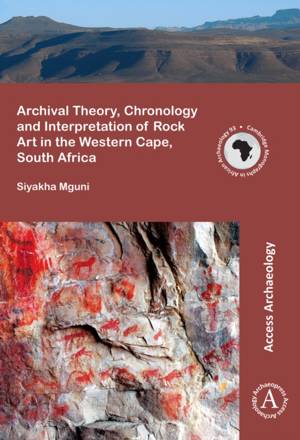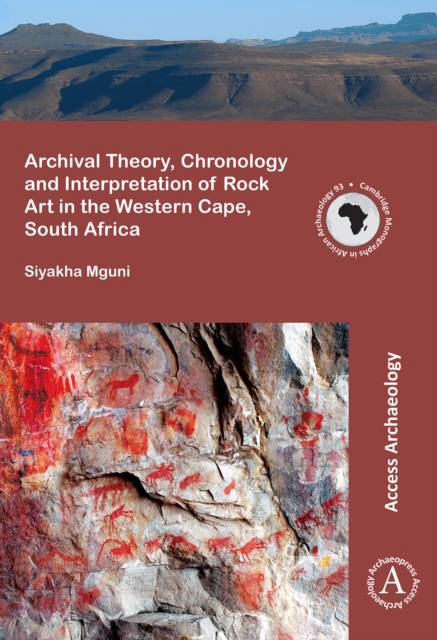
- Afhalen na 1 uur in een winkel met voorraad
- Gratis thuislevering in België vanaf € 30
- Ruim aanbod met 7 miljoen producten
- Afhalen na 1 uur in een winkel met voorraad
- Gratis thuislevering in België vanaf € 30
- Ruim aanbod met 7 miljoen producten
Zoeken
Archival Theory, Chronology and Interpretation of Rock Art in the Western Cape, South Africa
Siyakha Mguni
€ 54,45
+ 108 punten
Omschrijving
Since absolute dating of rock art is limited, relative chronologies remain useful in contextualising interpretations of ancient images. This book advocates the archival capacity of rock art and uses archival perspectives to analyse the chronology of paintings in order to formulate a framework for their historicised interpretations. The Western Cape painting sequence is customarily accepted to include the hunter-gatherer phase from c. 10,000 BP, pastoralism from c. 2,000 BP and finally the historical-cum-colonial period several centuries ago. Painting traditions with distinct depiction manners and content are conventionally linked to these broad periods. This study evaluates this schema in order to refine the diverse hunter-gatherer, herder and colonial era painting contexts and histories. Using superimpositions as one analytical tool, the notion of datum aided the referencing and correlation of layered imagery into a relative sequence. Although broad differences separate painting traditions, and these variations are generally indistinguishable within a single tradition, it is clear that the long-spanning hunter-gatherer segment of painting in this region reflects a hitherto unrecognised sub-tradition. Some painted themes such as elephants, fat-tailed sheep, handprints and possibly finger dots occur within various levels of the sequence, which this study views as shared graphic fragments occurring between and across traditions and sub-traditions. Through the archival concept of respect des fonds such observable complexities were clarified as coherent graphic narratives that run through the entire chronological sequence of the Western Cape rock paintings. Probing archaeological, ethnographic and historical sources revealed that while these themes remained fundamentally consistent throughout the stratigraphic sequence as preferred subject matter, their meanings might have transformed subliminally from earlier to later periods, possibly reflecting layered shifts in the socio-economic, cultural and political circumstances of the region. Fundamentally, the framework of image histories shown by the choice and sustenance of specific themes is understood to mean that their significance and specific graphic contexts throughout the chronological sequence are pivoted and mirrored through the long established hunter-gatherer rock paintings which predate periods of contact with other cultures. The resulting sequence and interpretation of these painted themes is a descriptive and organisational template reflecting the original organic character in the creation of the paintings and ordered cultural continuities in the use of animal/human symbolism. This book's agenda in part involves reviewing the Western Cape's changing social and historical landscape to show variation in painting over time and to project possible interpretative transformations. Painting sequences and cultural (dis)continuities are thus intricately entwined and can be disentangled through a recursive analytical relationship between archaeology, ethnography and history. This amalgamated analytical approach produces historicised narratives and contextual meanings for the rock paintings.
Specificaties
Betrokkenen
- Auteur(s):
- Uitgeverij:
Inhoud
- Aantal bladzijden:
- 165
- Taal:
- Engels
- Reeks:
Eigenschappen
- Productcode (EAN):
- 9781784914462
- Verschijningsdatum:
- 24/10/2016
- Uitvoering:
- Paperback
- Formaat:
- Trade paperback (VS)
- Afmetingen:
- 211 mm x 297 mm
- Gewicht:
- 589 g

Alleen bij Standaard Boekhandel
+ 108 punten op je klantenkaart van Standaard Boekhandel
Beoordelingen
We publiceren alleen reviews die voldoen aan de voorwaarden voor reviews. Bekijk onze voorwaarden voor reviews.











